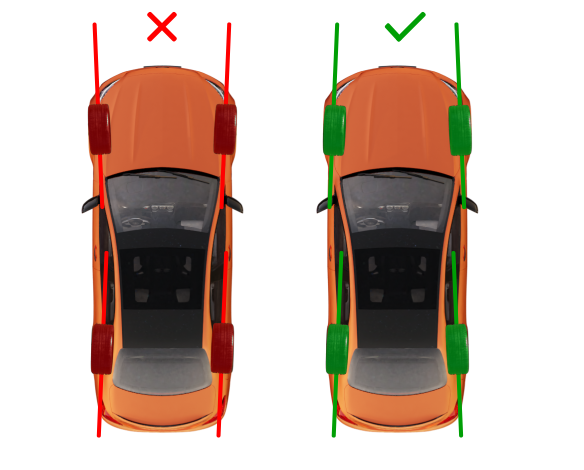Is It Time for a Wheel Alignment?
How do driving conditions affect my vehicle’s wheel alignment?
Bad roads can be your wheels’ worst enemy. If you drive down poorly maintained roads, drive through pot holes, or even hit a curb, your alignment can be greatly affected.
This can cause even the slightest, tiniest alignment issue, which can accelerate uneven tire wear. Make sure you have your alignment checked every 6,000 miles or so. Your tires and your wallet will thank you later.
How will a wheel alignment help my vehicle?
Repeat after us: A wheel alignment ensures optimal drivability. It will help your tires last longer, your vehicle drive smoother, ultimately keeping your wheels pointed in the right direction. And, when it drives more smoothly, it’s smooth sailing—or should we say cruising—ahead. Plus, your car will require less energy to keep going, potentially saving a ton of fuel depending on how much alignment was required.
When your car rolled off the manufacturer assembly line, it came preset with special angles that position your tires correctly. And for good reason. In order for your vehicle to travel the way it’s supposed to, it will need precise alignment. Mis-alignment can lead to uneven tire wear, poor handling and shorter tire life. Tires are expensive. Keeping them aligned isn’t.
How can I tell if my car’s alignment is off?
There are some noticeable signs that could indicate a misalignment. Just use your eyes, ears and hands. Your senses (and even the good old personal hunch) are good human capital for spotting poor alignment. Here are some common signs that you are dealing with wheels with poor alignment:
- Vehicle pulling to the left or right
- Uneven or rapid tire wear
- Your steering wheel is crooked when driving straight
- Squealing tires

https://www.firestonecompleteautocare.com/blog/alignment/is-it-time-for-a-wheel-alignment/
